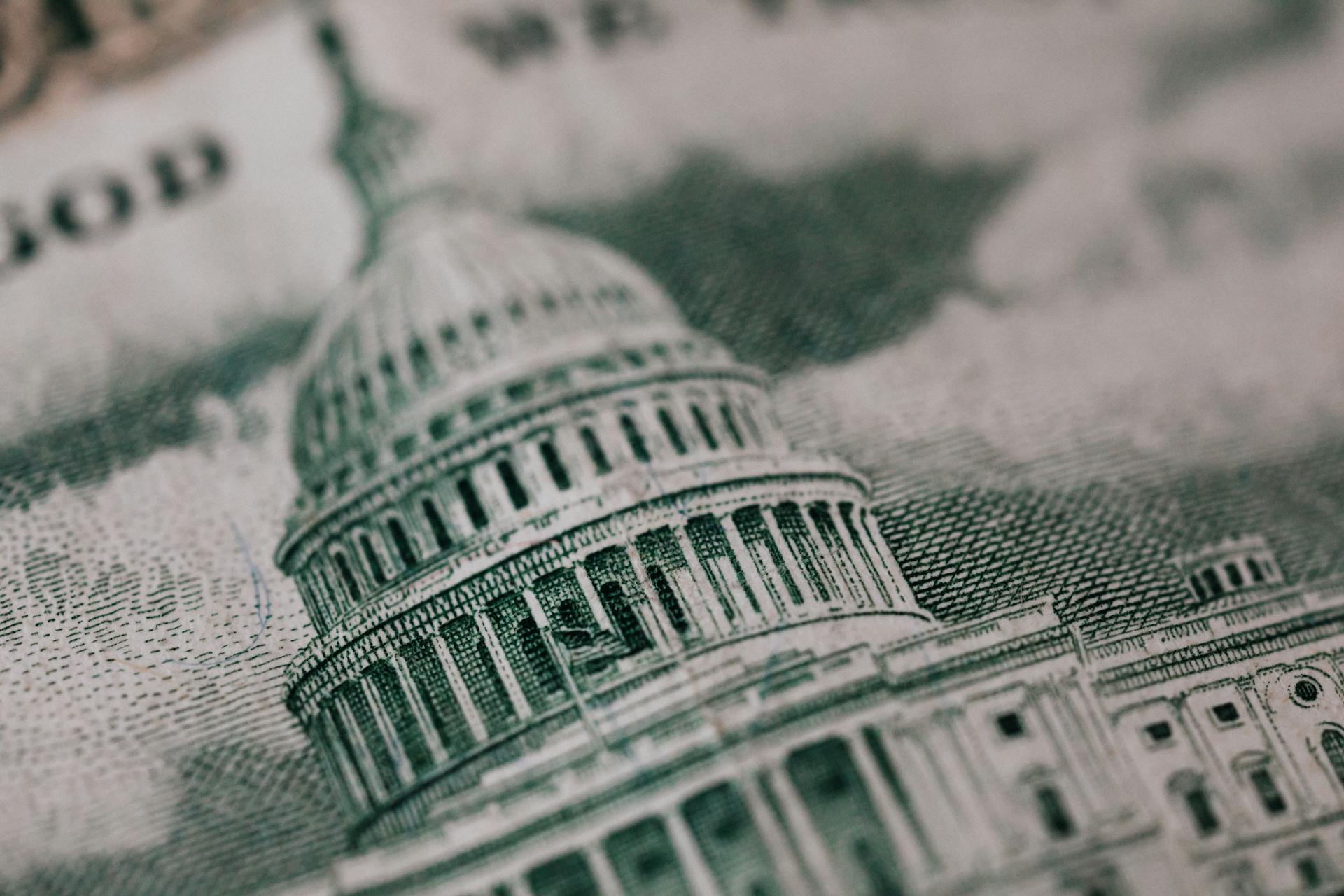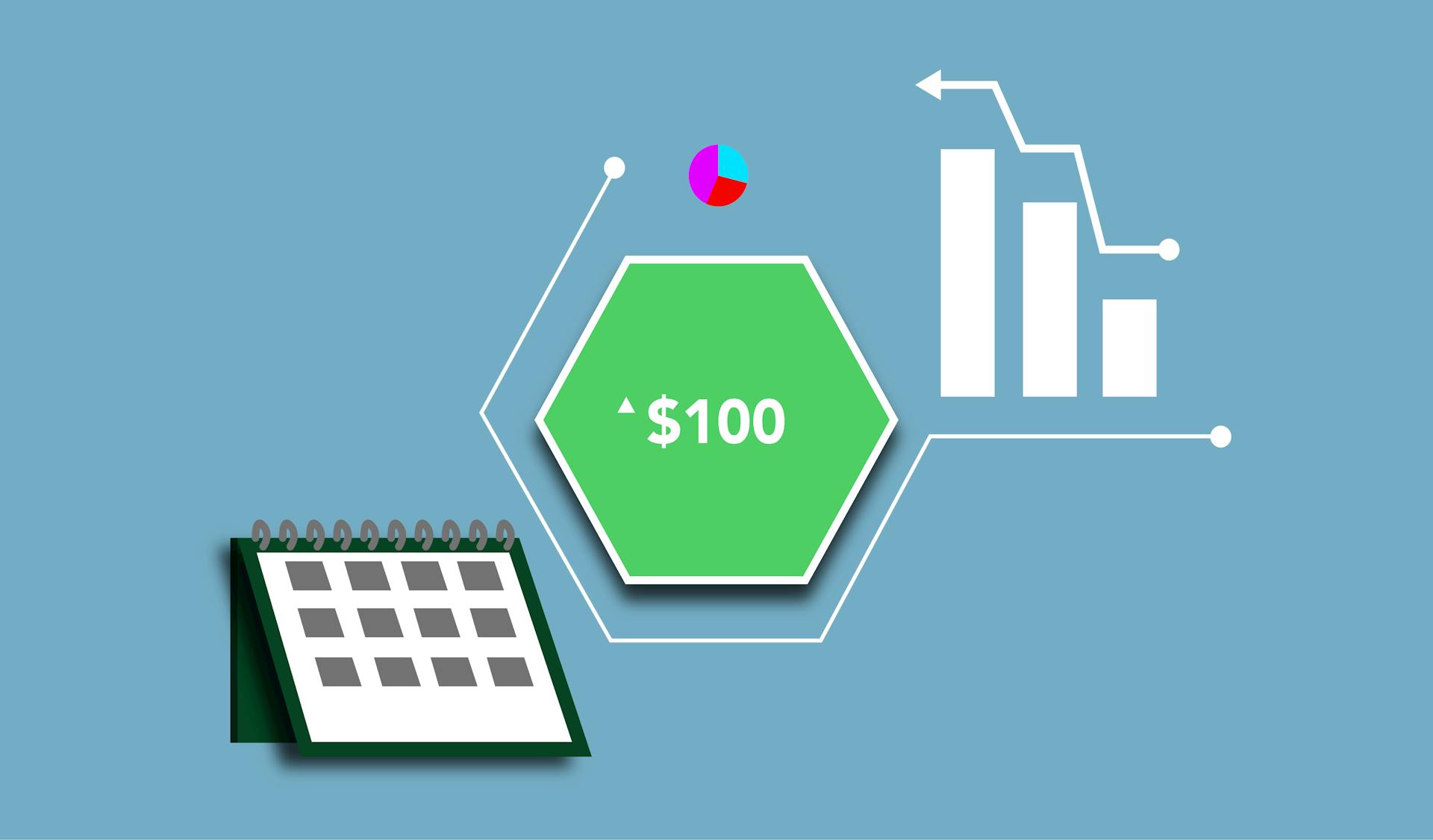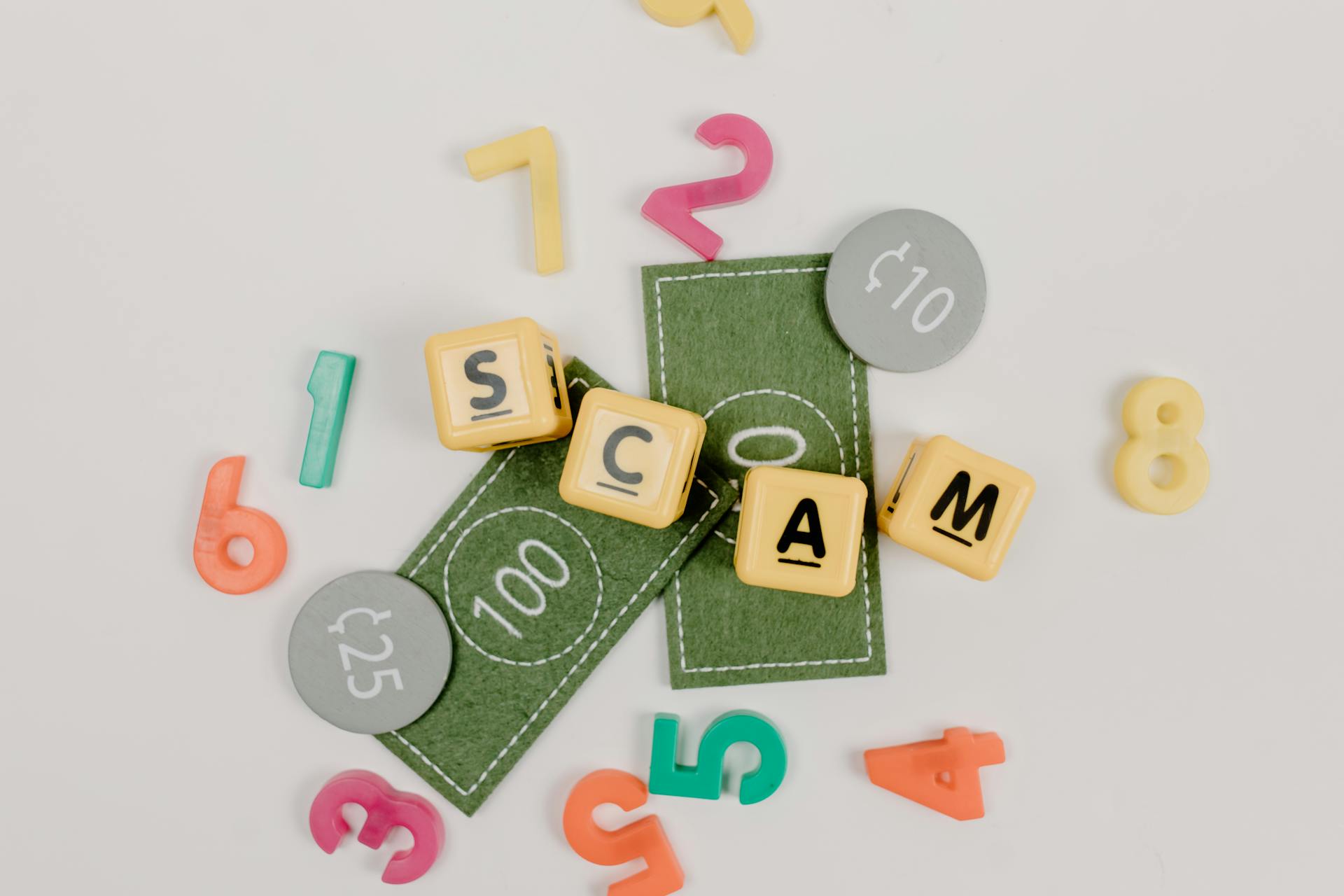
A T-Bill, short for Treasury Bill, is a type of investment that's backed by the US government. It's essentially a loan to the government, where you lend them money for a short period of time, usually a few weeks or months.
T-Bills are considered one of the safest investments out there, with a virtually zero risk of default. They're also highly liquid, meaning you can easily sell them before they mature.
But what about their place in your portfolio? T-Bills can provide a steady stream of income and help you manage risk. They're often used as a hedge against inflation, as the return on T-Bills tends to keep pace with inflation.
T-Bills can be a great addition to your portfolio, especially during times of economic uncertainty.
Consider reading: What Is Government Bonds and Securities
Buying and Investing
You can buy Treasury bills through a bank, dealer or broker, or online from TreasuryDirect. The bills are issued through an auction bidding process, which occurs weekly.
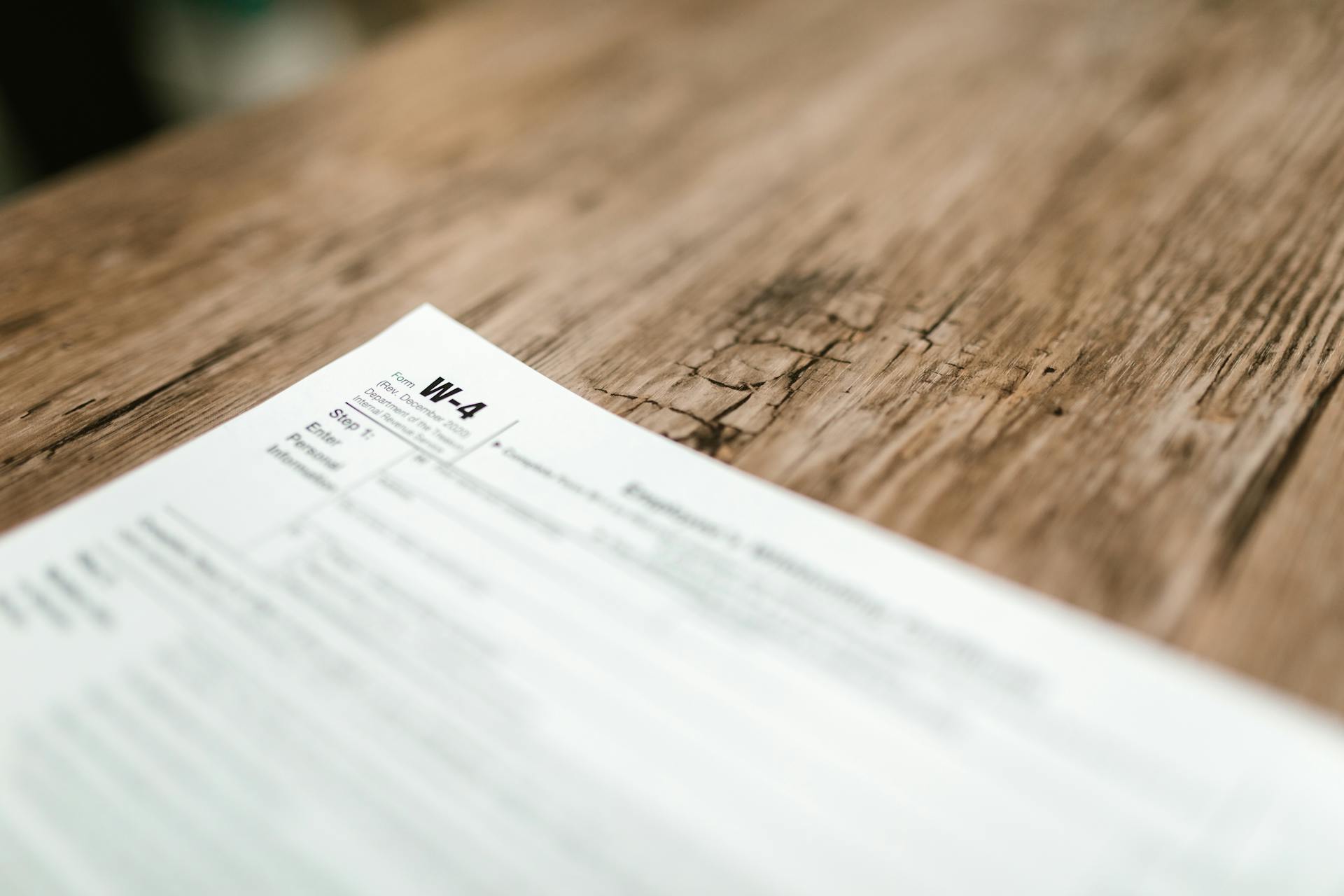
To buy a Treasury bill, you can decide whether to make a competitive or noncompetitive bid. Noncompetitive bidding is the simplest way to purchase a Treasury bill, and you'll be guaranteed that your bid will be accepted, but you won't know exactly what interest rate you'll receive until the auction closes.
You can submit noncompetitive bids online using TreasuryDirect, and the maximum amount you can buy through noncompetitive bidding is $10 million. If you're bidding competitively, you can specify the return you want to receive, but your bid may be rejected if it's higher than the rate set by the auction.
Here are the general steps to buy a Treasury bill:
- Gather the necessary information: Your Social Security number or taxpayer identification number (TIN), a U.S. address, and checking or savings account numbers you'll use for your payments.
- Visit TreasuryDirect.gov and create an account.
- Select the account type and enter your personal information.
- Create a username and password.
- Verify your account and log in to the "Buy Direct" tab.
- Make your choice and click "Buy."
The auction process begins as soon as the U.S. Treasury announces the Treasury bill auction, and the closing time is slightly different for competitive and noncompetitive bidders.
Types of Bills
When buying Treasury bills, you have a few options to consider. There are several types of bills to choose from, each with its own characteristics.

The most common type of bill is the Treasury bill, which is a zero-coupon bond sold at a discount. This means you won't receive any interest payments until the bill matures.
Treasury bills come in different maturities, ranging from a few weeks to a year. The shorter the maturity, the lower the interest rate you'll earn.
Here are some common maturities for Treasury bills:
Regardless of the maturity, you'll receive the full face value when the bill matures, which is the accrued interest plus the original purchase price.
Features of Bills
Treasury bills are a type of investment that can be a good option for risk-averse investors, offering steady returns and preserving capital.
They are considered one of the safest investments available, backed by the full faith and credit of the U.S. government, meaning you're not likely to experience losses on your initial investment.
However, their low-risk nature also means they generally provide lower yields than other investments.
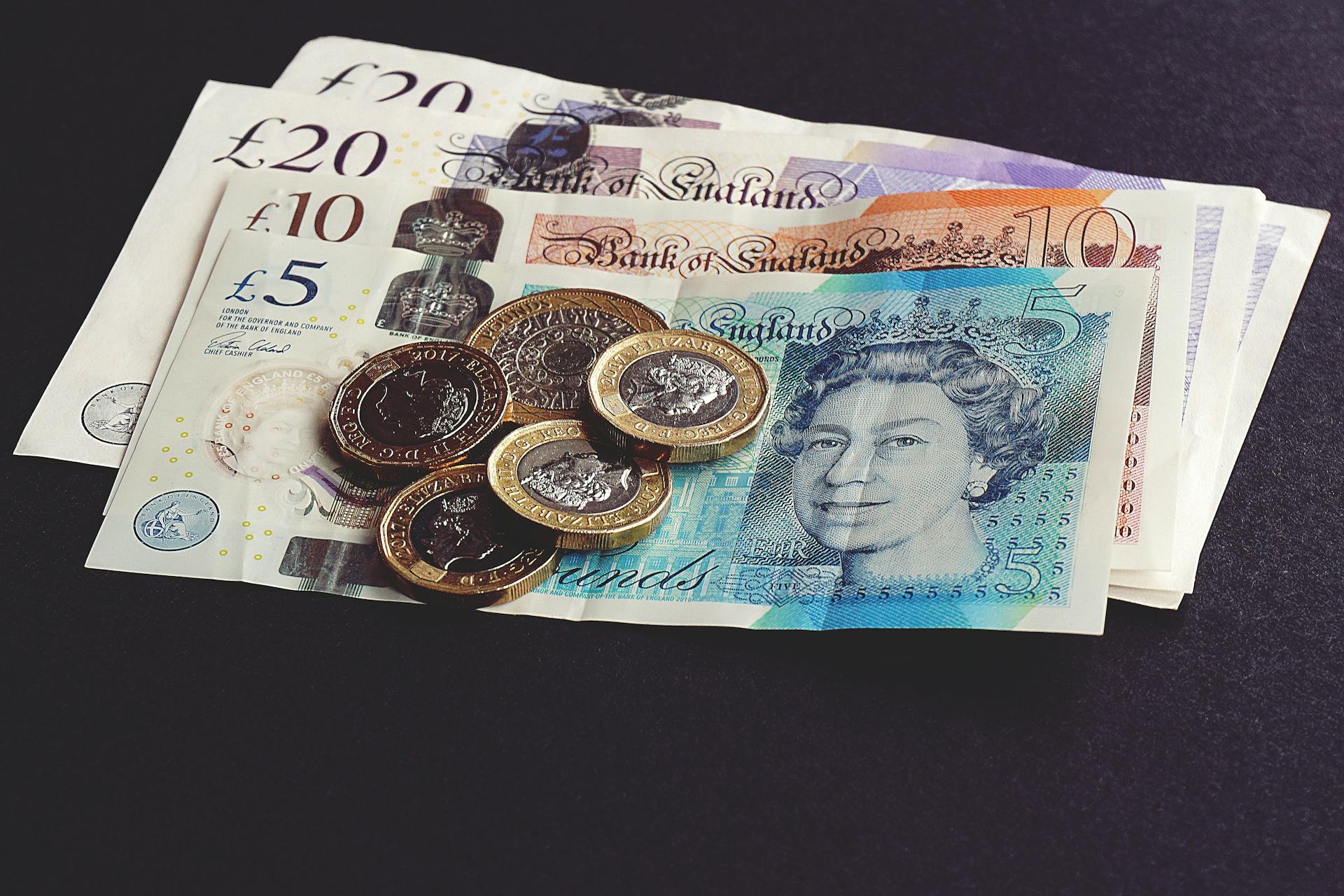
To invest in treasury bills, you'll need to have a minimum of Rs. 25,000, which must be invested in multiples of Rs. 25,000.
The investment method is quite straightforward, with the RBI auctioning such securities every week on Wednesday, depending on the total bids placed on major stock exchanges.
Investors can choose to procure such government assets through depository participant commercial banks, or other registered primary dealers (PDs), with a T+1 settlement process.
Alternatively, many open-ended mutual fund schemes also include treasury bills in their corpus for individuals willing to invest through such funds.
Here's a breakdown of the key features of treasury bills:
The yield rate on treasury bills can be calculated using a simple formula, which takes into account the discounted price, face value, and duration of the investment.
For example, if the RBI issues a 91-day treasury bill at a discounted value of Rs. 98 while the face value of the bill is Rs. 100, the yield on such G-Secs can be determined as follows: Yield = (100 – 98)/98 x 365/91 x 100 = 8.19%.
Consider reading: Current Inverted Yield Curve
How to Buy a T-Bill

You can purchase Treasury bills at a bank, through a dealer or broker, or online from a website like TreasuryDirect. The bills are issued through an auction bidding process, which occurs weekly. Treasury bills are now issued exclusively in electronic form, though there used to be paper bills.
To buy a Treasury bill, you have to decide whether to make a competitive or noncompetitive bid. Noncompetitive bidding is the simplest way to purchase a Treasury bill and is what most people do who are not experts in security trading.
You can buy a maximum of $10 million in bills through noncompetitive bidding, and the maximum one investor can be awarded by competitive bidding is 35 percent of the total amount given out.
The auction process begins as soon as the U.S. Treasury announces the Treasury bill auction. At this point, the Treasury starts accepting bids, which can be submitted until the auction closing time.
See what others are reading: How Do You Buy Us Treasuries

For noncompetitive bids, the easiest option is to buy T-bills online using TreasuryDirect. If you're bidding competitively and you're new to Treasury bills, it's probably smart to work with a bank or broker.
The closing time is slightly different for competitive and noncompetitive bidders. In most auctions, the noncompetitive bids close at 12 p.m. (noon) Eastern time on closing day, and competitive bids close at 1 p.m.
Here are the steps to buy a Treasury bill through TreasuryDirect:
1. Gather the following information: Your Social Security number or taxpayer identification number (TIN), a U.S. address, and checking or savings account numbers you'll use for your payments.
2. Visit TreasuryDirect.gov: If you already have an account, proceed to step six.
3. Select the account type: You'll select among individual, business, estate, organizational, or trust.
4. Enter your personal information: Your TIN, U.S. address, and bank account details.
5. Create a username and password: You'll use these to set up your TreasuryDirect account.
6. Verify your account: After you do so, log in and click on the "Buy Direct" tab.
7. Make your choice: Select "Treasury bonds" as the security you wish to buy, along with the desired amount.

8. Click "Buy."
9. Review and confirm: You'll be directed to a page where you'll review the details of your purchase. Carefully check for accuracy.
10. Submit the order: You may be asked to accept terms and conditions, after which you'll click to send in your order.
At maturity, the yield from your Treasury bond will be automatically deposited into your linked account.
Who Should Invest?
If you're risk-averse and hesitant to invest in the stock market, treasury bills are a secure option.
Government treasury bills offer substantial yields, making them an ideal tool to invest in surplus funds.
Individual investors can participate in the non-competitive bidding process facilitated by the RBI, by placing their bid with a primary dealer of a scheduled commercial bank.
This process provides full transparency, as details about the discount rate and par value are published beforehand.
Treasury bills are also a popular choice for portfolio diversification, allowing experienced investors to allocate a portion of their funds into government securities and dilute the overall risk to their corpus.
These sovereign bills play a crucial role in regulating the total money supply in an economy, influencing funds pooled into the capital market.
Curious to learn more? Check out: List of Government Bonds
Benefits and Drawbacks
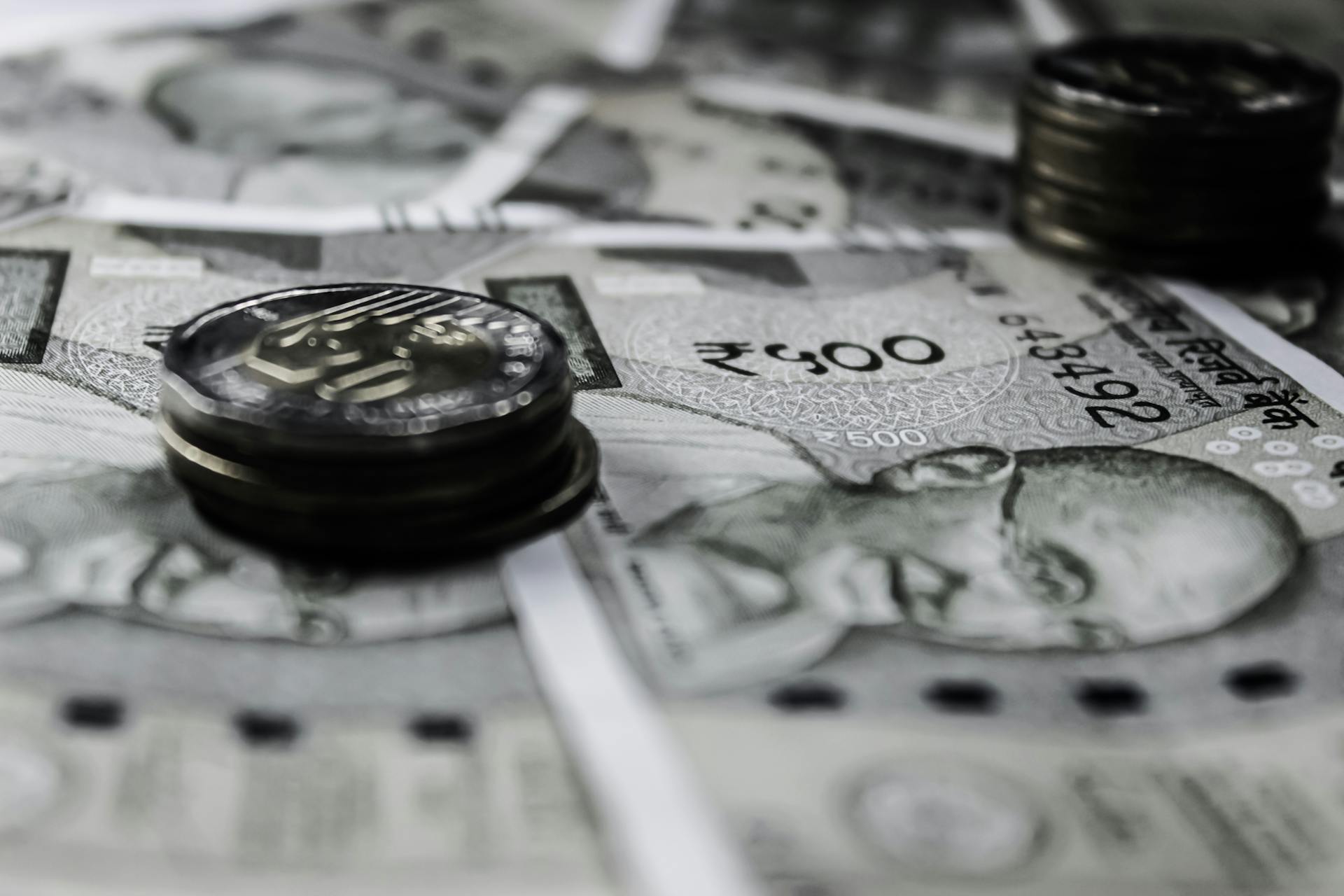
Treasury bills, or T-bills, are a type of short-term government security that offers a range of benefits and drawbacks.
They provide comprehensive security on your investment, backed by the central government, with zero default risk since they have a U.S. government guarantee.
T-bills are auctioned by the RBI every week through non-competitive bidding, allowing retail and small-scale investors to participate without having to quote the yield rate or price.
This makes them a great option for amateur investors who want to get involved in the government securities market.
However, their returns are typically lower than corporate bonds and some certificates of deposit, and they don't pay periodic interest payments.
Instead, they're sold at a discount to the face value of the bond, and mature to the full face amount.
Here are some of the key benefits and drawbacks of T-bills:
Ultimately, whether or not T-bills are a good investment for you will depend on your financial goals and risk tolerance.
Interest and Payments

T-bills are issued at a discount from the par value, which means the purchase price is less than the face value of the bill. For example, a 52-week T-bill might be sold for $95.419667 per $100.
The investor is paid the face value, or par value, of the bill when it matures. This means if you purchase a $1,000 52-week T-bill, you'll receive $1,000 on maturity.
The difference between the purchase price and the par value is the interest earned for the investor. In the example, the gain is $45.80 in interest when the T-bill matures.
T-bills don't offer regular interest payments like a coupon bond, but they do include built-in interest reflected in the amount they pay when they mature.
Government and Policy
The government issues treasury bills to raise funds for its current obligations, which often exceed its annual revenue generation. This helps reduce the total fiscal deficit in an economy.
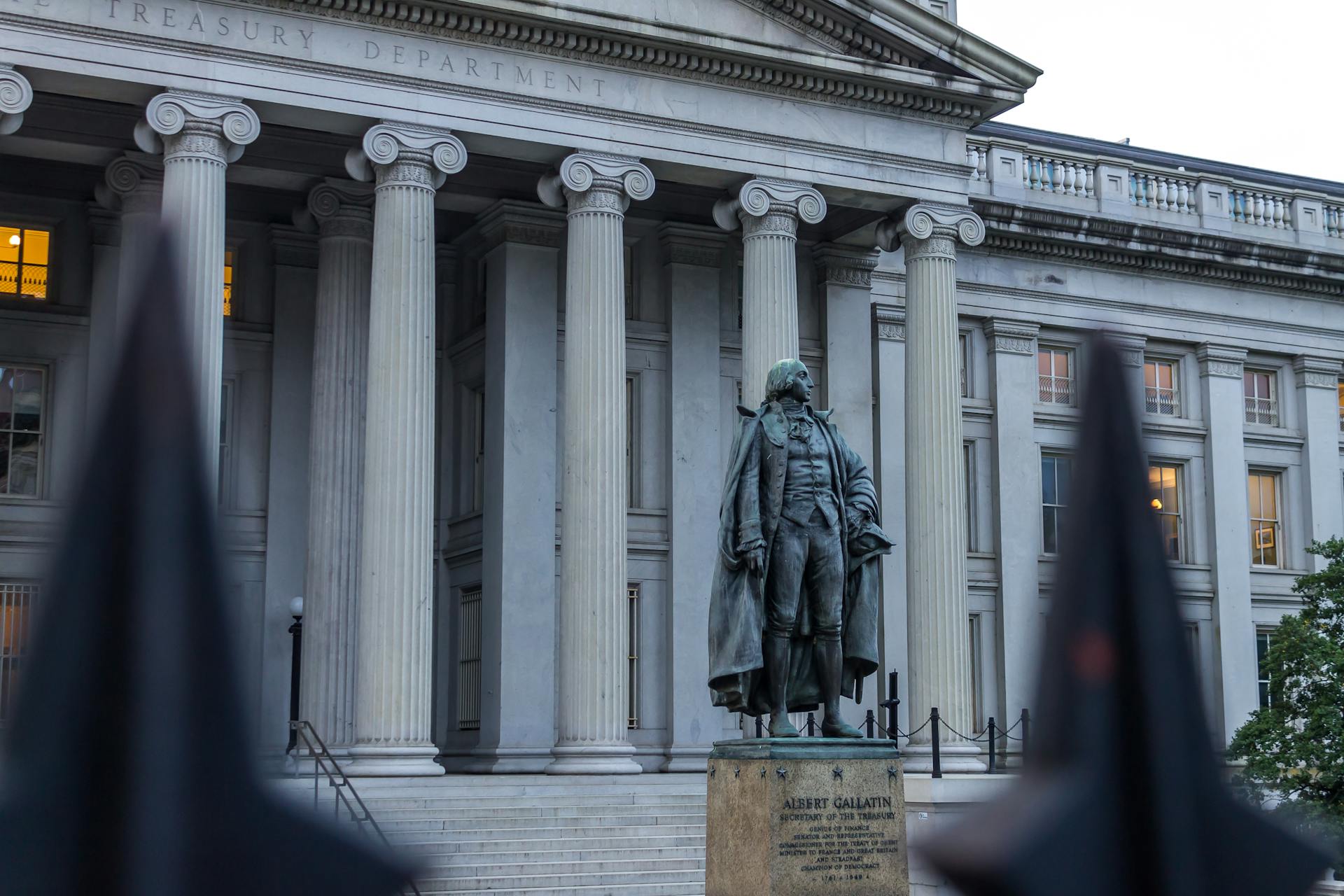
The Reserve Bank of India (RBI) also uses treasury bills as part of its open market operations (OMO) strategy to regulate inflation and spending habits. During economic booms, high-value treasury bills are issued to curb high prices and reduce aggregate money supply.
The RBI uses treasury bills to regulate money supply in an economy, and during times of recession, it reduces treasury bill circulation to boost cash flows to the stock markets. This helps increase productivity, which has a positive impact on GDP and aggregate demand levels.
Government Debt
Government debt is a crucial aspect of a country's economy. The government issues treasury bills to raise funds and meet its current obligations, which often exceed its annual revenue generation.
Treasury bills are short-term obligations, typically up to a year, and are issued by the government to reduce its fiscal deficit and regulate the total currency in circulation. This helps to curb inflation and stabilize the economy.
The Reserve Bank of India (RBI) also issues treasury bills as part of its open market operations (OMO) strategy to regulate inflation and spending habits. During economic booms, high-value treasury bills are issued to reduce aggregate money supply and curb high prices.
In times of recession, the RBI undertakes a contractionary OMO regime by reducing treasury bill circulation, which boosts cash flows to the stock markets and increases productivity. This has a positive impact on the GDP and aggregate demand levels in an economy.
The U.S. government issues various types of debt securities, including treasury bills, bonds, and notes, with different time frames and characteristics. Treasury bills are short-term, while treasury bonds have the longest time frame, maturing in 20 or 30 years.
Federal Reserve Policy
The Federal Reserve plays a crucial role in shaping the market for Treasury bills (T-bills). Its monetary policy and the federal funds rate directly impact T-bill prices.
The federal funds rate is the interest rate that banks charge each other for lending money from their reserve balances overnight. The Fed increases or decreases this rate to contract or expand the money supply.
When the Fed increases the federal funds rate, T-bill yields go up, making existing T-bills less attractive to investors. This leads investors to sell their existing T-bills.
On the other hand, when the Fed decreases the federal funds rate, T-bill yields go down, making existing T-bills more attractive to investors. This leads investors to buy existing T-bills.
Here's a summary of the relationship between the Fed funds rate and T-bill yields:
Frequently Asked Questions
How much does a $1000 T-bill cost?
A $1000 T-bill typically costs around $950 upfront, calculated using the discount rate formula. The exact price may vary, but this is a close approximation of the purchase price.
How does a T-bill work?
A Treasury bill (T-bill) is a short-term investment where you buy a bill at a discount price, with the promise of receiving its full face value when it matures. You essentially earn interest on your investment by paying less than face value upfront.
How much can you make on a 3 month treasury bill?
The 3-month Treasury bill rate is currently 4.37%, which means you can earn 4.37% interest on your investment over a 3-month period. However, actual returns may vary depending on market conditions and other factors.
Sources
- https://www.begintoinvest.com/definitions/treasury-bill-treasury-bill/
- https://www.mas.gov.sg/bonds-and-bills/singapore-government-t-bills-information-for-individuals
- https://money.howstuffworks.com/personal-finance/financial-planning/treasury-bills.htm
- https://groww.in/p/treasury-bills
- https://www.investopedia.com/terms/t/treasurybill.asp
Featured Images: pexels.com
